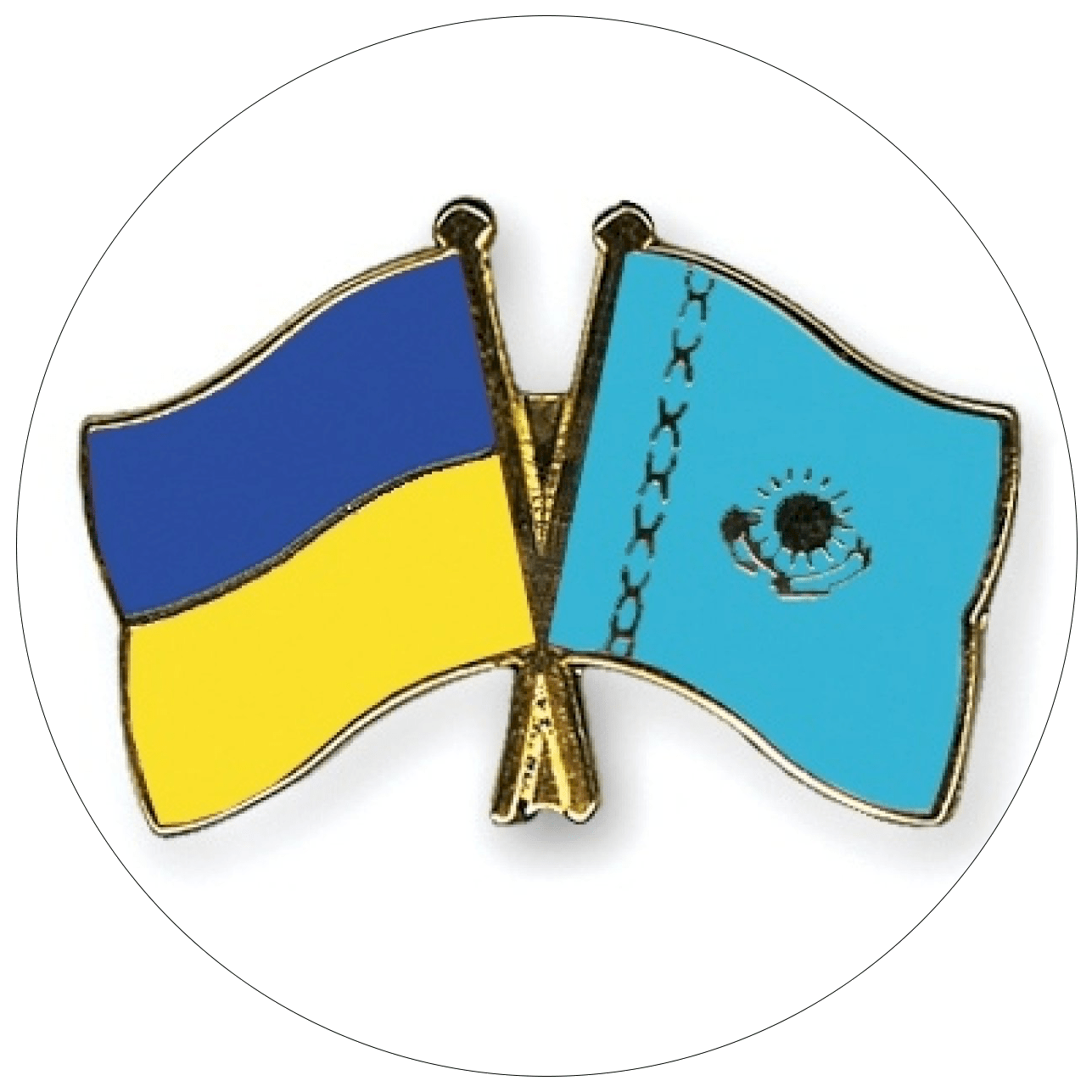Reality and formalities
Elena Butyrina
According to the forecasts of the Ministry of Economics and Budget Planning of the Republic, the growth of GDP in 2006 will be not less than 10%, with industrial manufacture increasing by 7%. In 2005 those figures were 9.4% and 4.6% respectively. Analysts of the international rating agency Moody’s state that, going by the rate of economic development during the last five years, Kazakhstan left behind even Russia, with the rates totalling to 79% for Kazakhstan and 48% for Russia. Kazakhstan has chosen the approach of stimulating the national economy using its own natural resources. This, according to experts, is better than the policies of combating sluggish development in other members of the CIS.
According to data obtained from the statistical agency of RK, during January to November 2006, the medium and large scale industrial companies of Kazakhstan produced goods valued at a total of 5,825 billion tenge, which is 6.8% higher than during the same period last year. The growth of industrial production is evident in all regions of the republic. The largest increase in industrial production during the past 11 months compared to the same period last year was achieved by the processing sector — 7.2%. In the mining sector, the growth reached 6.8% (at that, the volume of coal production increased by 11.3%, oil, 6.7% and iron ore, 16.3%), and in the production and distribution of electricity, gas and water the figure was 4.3%.
This year most of the industrial companies, mainly oil and metallurgic, not only demonstrated their potential, but, more importantly, also managed to surprise the market. Actions of the companies in this year can be divided into three groups: purchases and sales of liquid assets, entering the international capital markets and realisation of large, even sometimes ambitious, investment projects in various sectors of the economy. However, not all companies managed to accomplish their planned actions. Some “losers” do not intend to depart from their plans and intend to realise difficult but “fashionable” tasks in the future – the successful experience of producer colleagues, even from other economic sectors, is catching.
The great changes
The investments of Kazakhstan’s companies into industrial projects abroad are viewed as a sign of prosperity and the blossoming of domestic business. Kazakhstan’s appetite is rising against the background of rising prices for oil, gas and metals. The failure of Kazakhstani oil producers to obtain the Russian company “Udmurtneft” and the Lithuanian oil refining complex Mazeikiu Nafta at the beginning of the year were later completely compensated for by the purchases of other, no less profitable, assets abroad.
For example, at the end of this year the state-owned gas-transportation company “KazTransGas”, which is a member of “KazMunayGas” holding, bought from the Georgian government the gas distributing company “Tbilgaz” for $12.5 million, which services more than 210,000 individual consumers, 3,000 municipal objects and up to 400 large industrial entities. Almost simultaneously, International Mineral Resources (IMR) company, affiliated with the largest (largest what? Association?) in Kazakhstan, Eurasian Industrial Association (EIA), gained control over the Russian producer of chromic ferroalloys JSC “Serovsky zavod ferrosplavov” (SZF, Serov city, Sverdlovsk region), which was previously owned by the Kermas Group. KazakhGold Group Ltd, which is the founder of JSC “Mining-metallurgic concern Kazakhaltyn” (Akmola region), moved even further in exploiting geographic and business opportunities by recently winning, together with British Oxus Gold, two open tenders for the purchase of gold assets in Romania, which have been in the process of utilisation since 2005. These partners obtained the assets of Transgold SA, the joint venture of Australian Eurogold and the Romanian state-owned mining company, that in total amount to $6.99 million. Besides this, the partners also paid $300,000 for Explorer SA, the company that owns three additional exploration areas in the region. To manage gold projects in Romania, KazakhsGold Group and Oxus Gold have already created the joint venture Romaltyn with equal ownership shares.
The advantages of participating in the above projects are significant for all three Kazakhstani companies.
“KazTransGas”, which was the only contestant for the purchase of Tbilisi’s assets, gained control over the gas market of the Georgian capital city and an opportunity to demonstrate its abilities as an experienced manager in the CIS. Top managers of “KazTransGas” do not preclude the possibility that the Georgian government, attracted by the future condition of a company that requires investments of about $82 million, would be willing to regain control. In that case, the government would have to pay an amount that is a degree higher than the price that was paid for the gas distributing network.
For the EIA (which includes such industrial monster-companies as JSC “Aluminium of Kazakhstan”, JSC “Sokolovsko-Sarbayskoe gorno-obogatitelnoe proizvodstvennoe obedinenie”, JSC “Eurasian energy corporation”, enterprises of multinational corporation “Kazchrom”, JSC “Jayremsky GOK” and coal companies JSC “Shubarkol Komir” and JSC “Mugoteks”), acquiring JSC “Serovsky zavod ferrosplavov” not only significant increases its volume of production and exports, but also provides an opportunity to settle in the Russian market. Judging by previous years, the market does not favour neighbouring investors (for example, the Russians didn’t allow the copper monopoly of Kazakhstan “Kazakhmys” to acquire businesses of the Udokansk copper fields).
KazakhGold Group, which, together with its British partner, intends to invest $5.25 million into Romania, has received a low-cost and high profitability project in Europe. The investments of the joint venture are expected to be compensated (paid back?) after half a year, and the profit is expected to amount to $19 million.
It appears that Kazakhstan’s expansion into foreign markets will continue in the future. “KazTransGas”, which is already working in Georgia and had been working in Kyrgyzstan even earlier, recently has been short-listed for the purchase of a heat power plant in the capital of Bosnia and Herzegovina, Sarajevo, and applied to participate in the construction of two new power stations, and the development of coal field in Kosovo. The Kazakhstani state-owned company has a serious advantage over its European competitors in its own fuel resources, coupled with extensive experience in the Kazakhstan energy sector.
Kazakhstan’s industrial manufacturing market attracted the attention of local as well as foreign investors this year. The tendencies of redistributing assets, which started last year, were actively continued this year.
There were two major M&A deals on the market during the year. Firstly, “KazMunayGas” purchased 50% of the shares of PetroKazakhstan Inc. from the Chinese National Petroleum Corporation (CNPC) in July. Secondly, 50% of the share capital of JV “Kazgermunay” was purchased from the German RWE Dea AG (daughter company of Gas de France) and (an?) International financial corporation (what is this?). Interestingly, the latter acquisition was made by PetroKazakhstan. Only a month after the above deals, 67% of the shares of PetroKazakhstan were bought from CNPC by its daughter company PetroChina Co. Ltd. In the autumn, “KazMunayGas” purchased 50% of Shymkent oil refinery’s shares from the Chinese party. All this again emphasises the tendency to tighten government control over the market.
It seems that cooperation between Kazakhstan and China in the fuel and energy sector goes beyond the above deals. Attempting to acquire Kazakhstan’s oil assets, the Chinese state-owned China International Trust and Investment Corp. Group (CITIC Group) agreed to purchase JSC “Karajanbasmunay” for $1.9 billion, which is owned by Nations Energy Co. Ltd. That is registered in Canada and owned by Indonesian investors. Although the Kazakhstani government apprehends the recent strengthening of the Chinese expansion in the local market, CITIC Group is more likely to win the battle for Kazajanbas than the Russian “Lukoil” of Indian ONGC, which is also trying to acquire the assets. Incidentally, the latter two companies made their own partnership agreement; at the beginning of the next year “Lukoil Overseas” is expected to sell half of the authorized capital of its daughter company Caspian Investments Resources Ltd, which controls some oil fields in the Mangistau and Aktobe regions of Kazakhstan, to Mittal Investments, part of the Mittal Group.
“The great changes” also had an effect in the sectors of oil, chemistry and metallurgy. In January, British Petroinvest Corporation Ltd. bought 40% of the shares of JSC “Kazneftehim” from “Asia Petroleum” Ltd. In May, the well known Russian entrepreneur Viktor Vekselberg became the owner of 24.9% of the shares of Eurasia Gold Inc. through his affiliated companies, after this (his?) Canadian company acquired the Kazakhstani gold-miner “Charaltyn”. In August, the largest Russian producer of zinc, the Chelyabinsk zinc plant, announced the purchase of 100% of the shares of Swiss Nova Trading & Commerce AG, which is the only owner of Nova Zinc, which conducts extraction and lead-zinc ore-dressing (ore-dressing of ores that consist of lead and zinc) on the Akjal field in Kazakhstan.
Taking into account the present favourable state of affairs on the main resource markets, one may expect that the re-distribution of property occurring in Kazakhstan, as well as in the rest of the world, is not over yet.
“Your turn…”
After the successful share issue of the Kazakhstani metallurgic companies “Kazakhmys” and KazakhGold Group on the foreign capital markets, the IPO “fashion” overwhelmed manufacturers and bankers. Indeed, the latter were more active this year. In September of this year, the manufacturing company JSC “Exploration extraction “KazMunayGas” placed, in total, 40% of its shares simultaneously on London and Kazakhstan’s stock exchange markets, receiving more than $2 billion from the sales. At the beginning of December, the Kazakhstani company “ShalkiaZinc”, whose major shareholder is Rifat Rizoev (with its managers owning other shares), placed global depository receipts as an IPO in London. Intrigue around the expected IPO of exploration and extraction firm “KazMunayGas” has lasted for almost a year. For a long time, the company didn’t wish to reveal its plans, apparently in order not to attract the excessive attention of social and political circles that are worried by the possibility of losing state control over the Atyrau oil refinery (as a result of which, the company even had to transfer the assets of the plant to its mother-company). On the other hand, the IPO of “ShalkiaZinc” company was a surprise to many.
Now, capital markets analysts and experts are waiting for the IPO of ENRC Kazakhstan Holding B.V. in 2007. This holding company includes the assets of large mining and metallurgy companies of EIA. The participants in the future event do not hurry to share opinions regarding it. It is only known that in June of this year the government of Kazakhstan, which has some shares in EIA, and ENRC Kazakhstan Holding B.V. signed documents that define the conditions (and the procedure) for the creation of ENRC PLC (UK). Approximately one quarter of the authorised capital of the company will be owned by the government, with the remainder owned by private investors. The creation of this new company should help to consolidate this group of firms, raise its financial attractiveness, enter the world capital markets, and realise the regional and global expansion of the Kazakhstan’s produce. Unification of resource companies into one holding is attractive to investors in itself, more so if the holding intends not only to supply raw materials and semi-finished products, but also to carry out a production of complete goods. Moreover, according to the opinion of experts, the situation on the world metal market is obviously favourable for the creation of new company. Market analysis shows that within the next two years demand for iron-ore raw materials will increase by approximately 17%, and even later there will be a tendency for a deficit in the supply of the material. Even after saturation of the market, the price should not decrease by more than 10 or 15%.
Placement of a $200 million seven-year European bond loan (known as Eurobonds) on the Luxemburg stock exchange by KazakhGold Group in November became a significant event for the company. The Eurobonds were distributed among investors from 21 countries. KazakhGold Group Ltd. became the first private company in Kazakhstan, and the fourth in the gold-mining industry, to raise funds through bond loans. Earlier, the financial resources of bond loans, which provide for a company’s development without collateral, were used for development by some of the largest gold-mining companies in the world, such as “Barrik Gold”, “Anglo Gold” and “NewMont”.
“The great construction”
Taking into account the price of export positions, all of the large players in the market are aiming to increase their productive capacity.
For example, in 2006 the Atyrau oil refinery, owned by “KazMunayGas”, completed its large scale construction work, which required an investment of $370 million over three years. Realisation of this project, financed by the Japanese Bank of International Cooperation ($200 million), a syndicate of Japanese Marubeni and commercial banks, HSBC and French BNP-Pariba (more than $35 million) and “KazMunayGas” (18.4 billion tenge), enabled the plant to obtain a second wind and improve all its productive and ecological indicators. Indeed, such reconstructions will soon take place in other oil refineries in Kazakhstan (in Pavlodar and Shymkent), where the investments required to accomplish the projects are currently being calculated.
Construction of the largest mining and ore-dressing complex in the world in Aktogay, in Eastern Kazakhstan, by “Kazakhmys”, with a projected productive capacity of 50 million tons of ore per year (the company’s current production is 40 million tons), by 2009 will be one of the largest projects realised by the company. By the same time, “KazZinc” intends to construct copper melting and electrolysis plants in the east of the country, which will allow matching ore-dressing possibilities with the metallurgic capacity of the company. This project is realised within the governmental resource-saving policy, because new technology will allow the extraction of more metals and the production of an additional 70,000 tons of cathode copper per year.
Also by 2009, NAC “Kazatomprom” plans to place in operation 12 new pits at once to satisfy the growing needs of the world’s atomic power market. Taking into account the production from “old” and “new” pits, the total extraction of uranium in Kazakhstan should increase up to 18,000 tons per year by 2010, and up to maximum level of 20,000 tons per year by 2015, with this level of production being maintained until 2027.
“Kazatomprom”, which lately surprises the world by its ambitious production plans, is not caught in the endless loop of uranium. In April this year, the company, for the first time in the mining and processing industry of Kazakhstan, launched a molybdenum concentrating factory at the hydro-metallurgic plant of Stepnogorsk mining-chemical complex (SMCC), thus entering the republic into the world market of molybdenum. In September, SMCC launched a sulphur-acidic plant. Today, a project for producing wolfram in Stepnogorsk is also under consideration. Besides, JSC “Metallurgic plant of Ulbinsk” (MPU), affiliated with “Kazatomprom”, is currently creating a joint venture for the production of beryllium bronze rolls with its Chinese partner Ningbo Shine Investment Co. Ltd.
These are only some of the projects that are ultimately aimed towards the further growth of the manufacturing sector in the republic, as well as an improvement in the competitiveness of Kazakhstan’s goods on the world markets.
In general, the passing year became some kind of a foundation for the realisation of new innovative projects in the manufacturing industry. New ideas and, more importantly, investments allow the creation of modern high-tech plants in the country, producing a broad range of goods, from oil-chemistry to construction materials, and even atomic power stations. Most of them will be launched due to large investments from Kazakhstani as well as foreign investors. The transparency policy globally declared by the government should serve as an attraction for foreign investments, at least into the natural resources industry. At that, it is important not to confuse reality with formalities. But that is, after all, the government’s problem.

 Поддержать
Поддержать
 Smart
Smart  Культурная среда
Культурная среда  Общество
Общество  Политика
Политика  "Законы XII таблиц"
"Законы XII таблиц"  Бизнес
Бизнес  Досье и мифы
Досье и мифы  Асар в Украине
Асар в Украине 


Комментариев пока нет